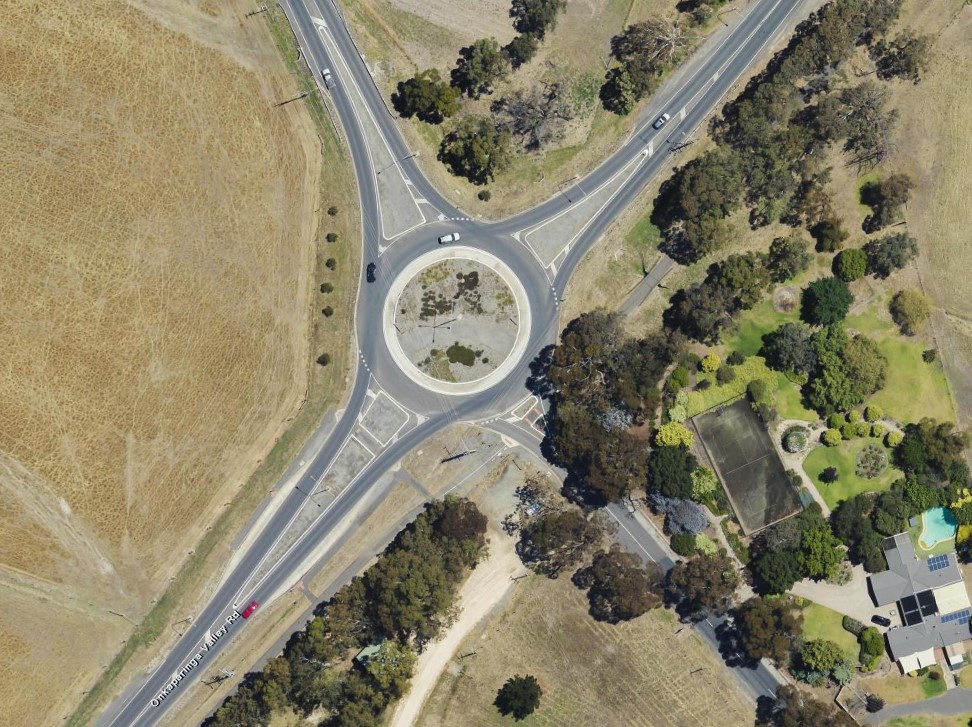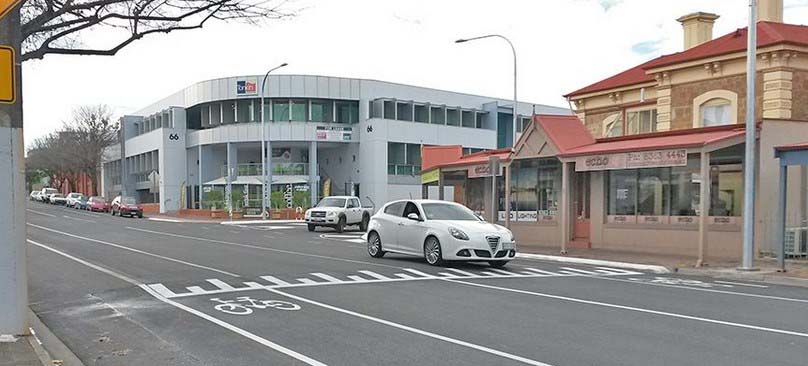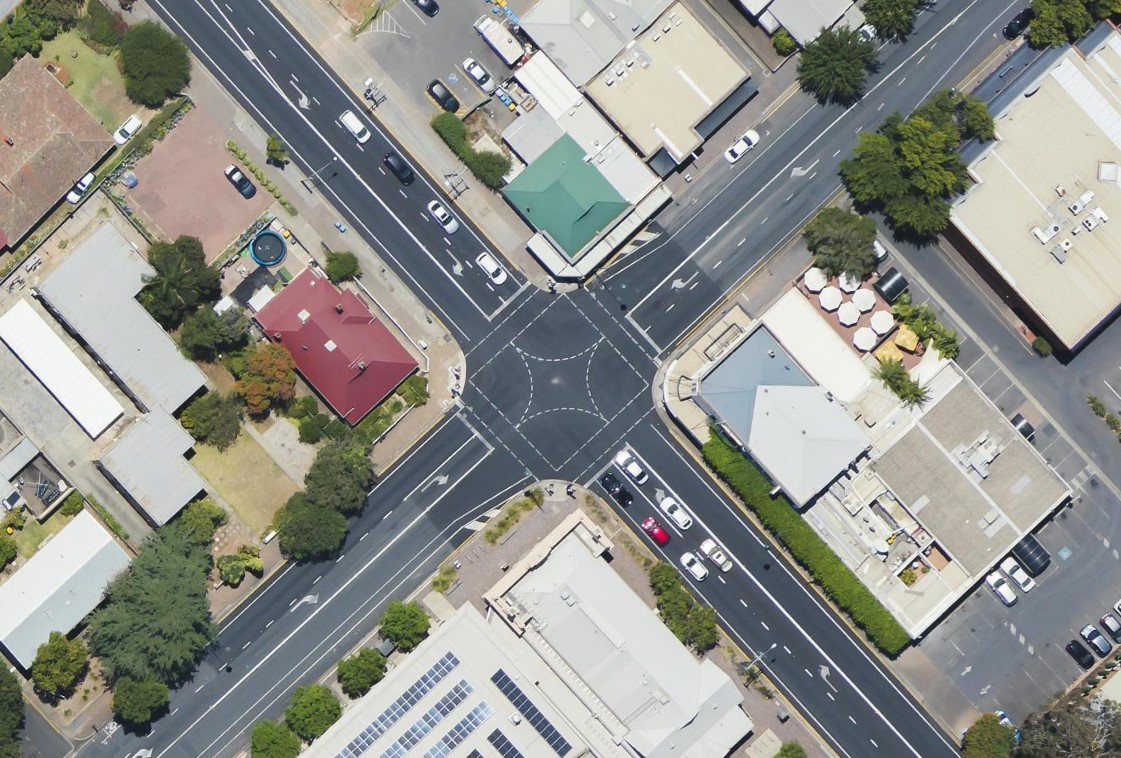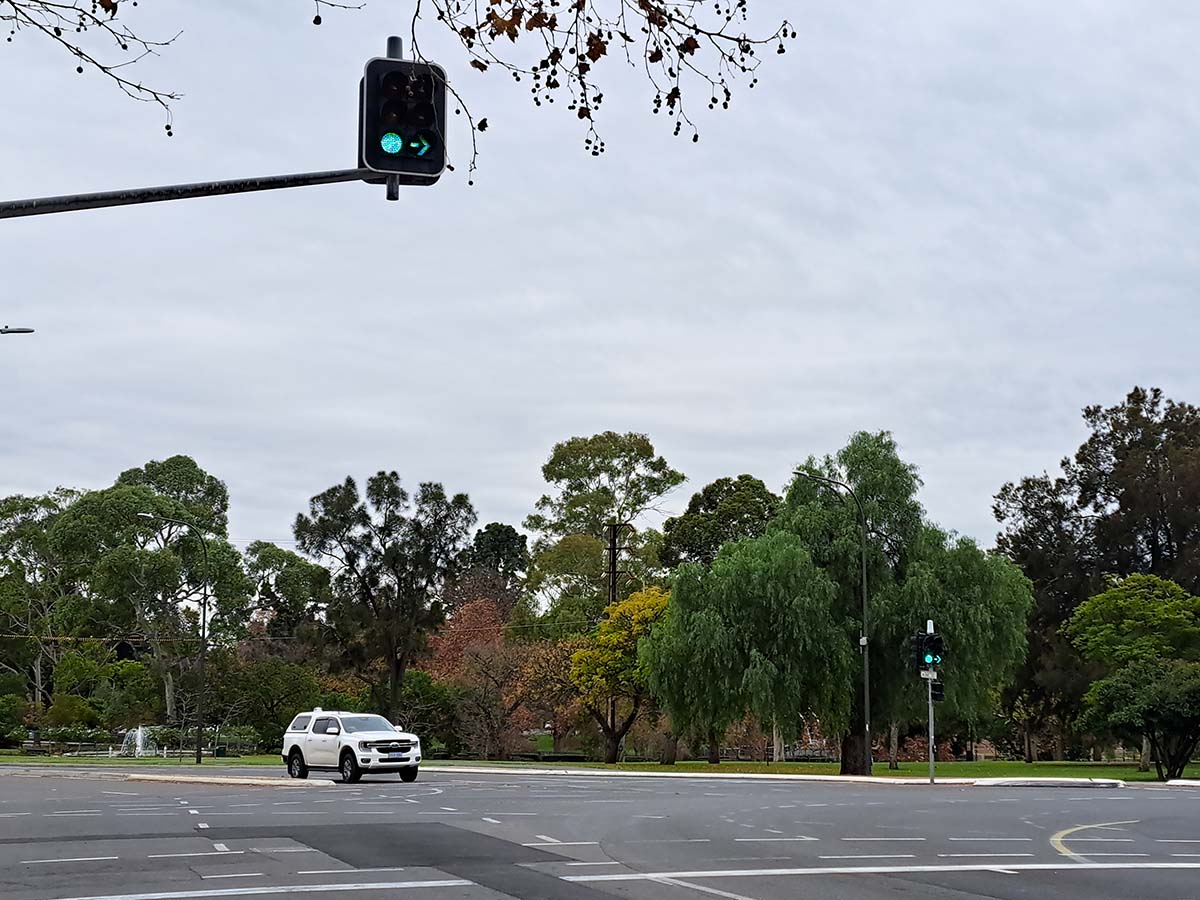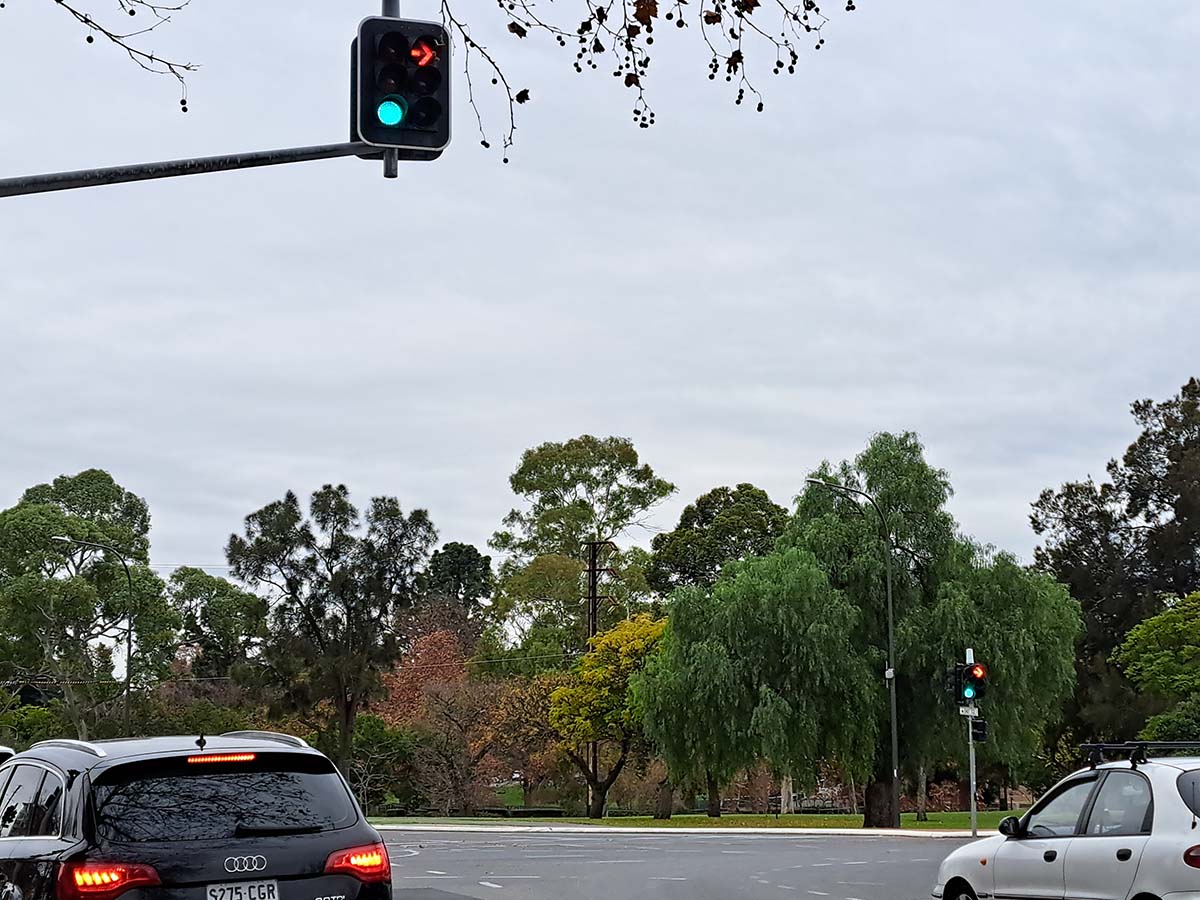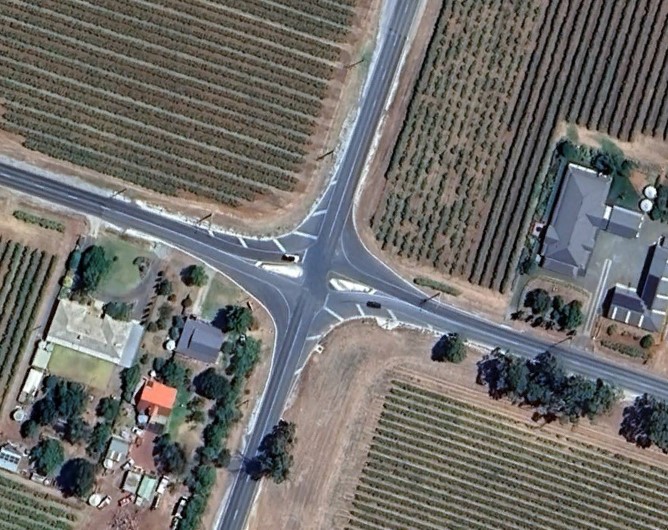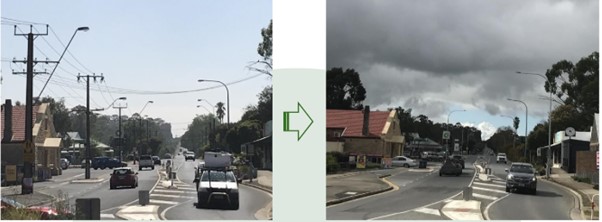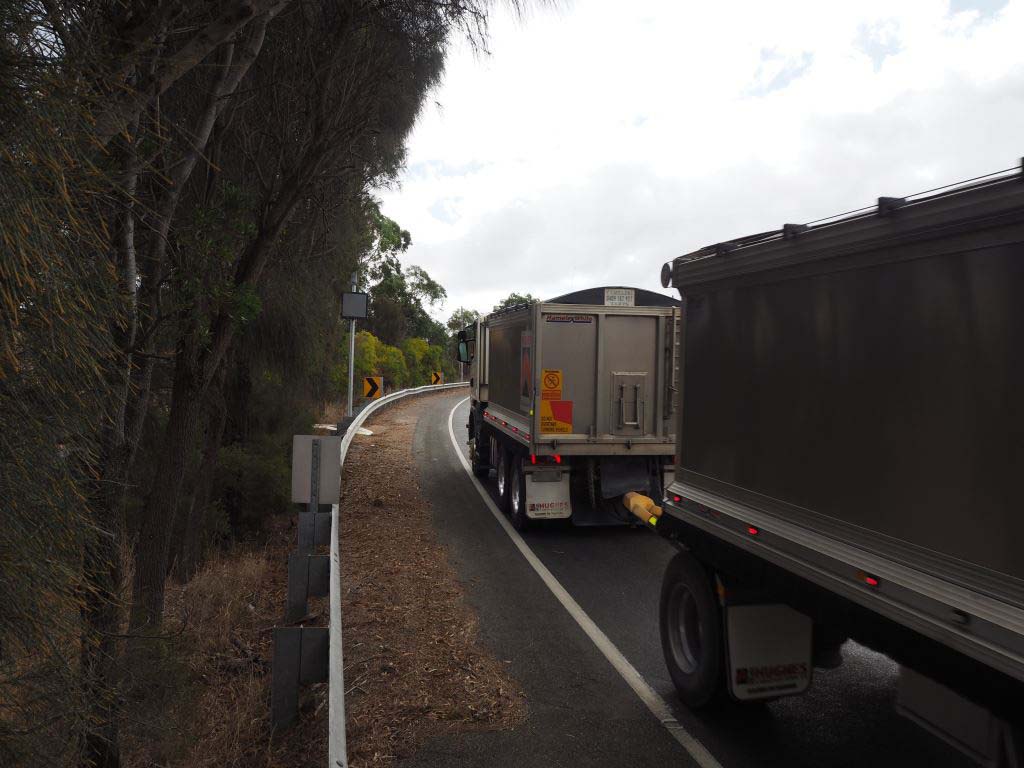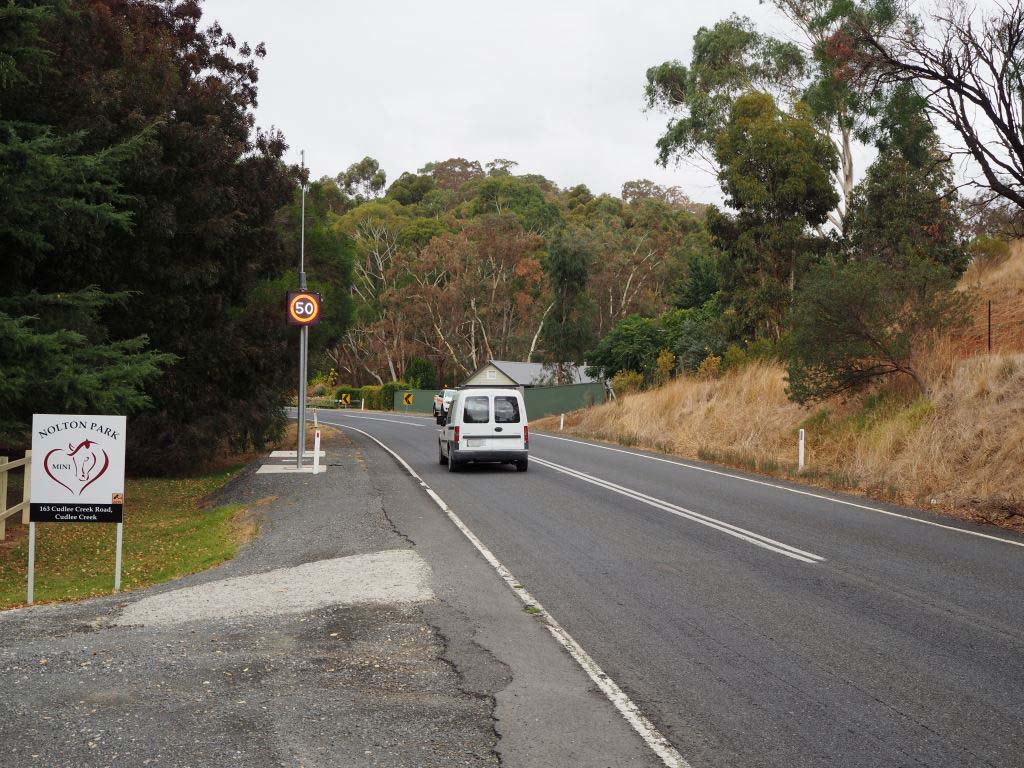Safety at Intersections
When turning right, judging the gaps in the oncoming traffic is often a difficult task for drivers. To reduce how frequently drivers need to make these judgements, we can apply effective treatments, such as fully or partially controlling right turns at signalised intersections.
Improving safety at unsignalised intersections is important for improving road safety. The treatment selected depends on the needs of the specific intersection. Factors considered will include:
- the space available
- the volume of traffic
- the sight distance.
The most effective Safe Systems based treatments are:
- roundabouts
- raised safety platforms
- channelisation of turning lanes
- controlling right turns
- teardrop intersections
- underground power lines (removal of stobie poles)
- Rural Junction Active Warning System (RJAWS).
Roundabouts
A roundabout is an intersection with an island at its centre. The installation of roundabouts assists with reducing potentially serious crashes and aligns with safe system principles. Roundabout benefits promoting a continuous flow of traffic, with traffic entering from one direction only, at lower speeds, which helps vehicles move smoothly through the roundabout. Roundabouts reduce the severity of injury in crashes and generally improve traffic flow compared to traffic signals.
Well-designed roundabouts simplify decision-making for drivers, encourage all drivers to slow down as they approach, reduce the number of conflict points and avoid 90-degree crashes.
My Licence includes details about approaching, entering and exiting a roundabout.
Raised safety platforms
Raised platforms can be used at intersections with a speed limit between 50 and 70 km/h and a history of right-angle crashes. They improve the safety of intersections by increasing driver awareness and forcing drivers to reduce their speed. This reduces the likelihood and severity of potential collisions.
A raised platform requires road users to slow down as they enter this junction and works similarly to a speed hump.
Channelisation of turning lanes
Channelisation turning treatments have significant safety benefits over other turn treatments, because they have a distinct separate turning lane. These treatments can assist with reducing rear-end crashes as the road lane configuration safely moves traffic into a separate turning lane.
Controlling right turns
Almost half of serious casualty crashes in metropolitan areas occur at intersections.
One of the most difficult tasks for drivers is to judge gaps in oncoming traffic when turning right or entering a major road from a local street. Effective treatments such as controlled right turns reduce the frequency for drivers to make these individual judgements.
Teardrop intersections
A teardrop intersection is a type of staggered T-junction created to improve the safety of what would otherwise be a 4-way intersection. Teardrop intersections are a relatively low-cost treatment to improve safety at an intersection. They are usually installed in regional or semi-regional locations. They involve the realigningment of two approach roads at an intersection and construction of tear drop shaped centre medians.
The resulting change in alignment and presence of the medians make the intersection more obvious to drivers approaching from the side roads. It also allows for additional signs to be installed and reduces the likelihood of approaching drivers failing to give way.
Underground power lines
Removing stobie poles and undergrounding power lines enhances the aesthetics of locations. It also removes a roadside hazard. Stobie poles are unforgiving objects designed for durability and not safety.
Streetlights are often fitted to stobie poles. New street light poles are needed to replace stobie poles To maintain a safe level of lighting. To reduce the impact experienced by vehicle occupants, street light poles on arterial roads are designed to either slip off at the base or crumple when struck.
Rural Junction Active Warning System
RJAWS at Paris Creek Road and Bull Creek Road intersection
RJAWS at Cudlee Creek Road and Fox Creek Road intersection
At regional intersections with inadequate line of sight at the approach, a Rural Junction Active Warning System (RJAWS) can reduce the likelihood and severity of potential collisions. This system works through sensors on the minor leg of the intersection. The sensors detect when a vehicle is approaching and trigger a speed limit reduction on the major leg of the intersection.
RJAWS is designed to increase the awareness of drivers on the approach to the intersection and reduce the speed and hence the severity of any potential collision.
The first image (Bull Creek Road) shows the speed sign when there is no vehicle present on the side road. The second image (Cudlee Creek Road) shows the active sign when a vehicle is present on the side road (in this case, lowering the limit to 50km/h).


